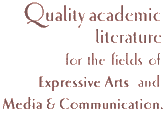Jean-Luc Nancy
Forbidden Representation
Despite its rather poor formulation, one proposition concerning the representation of the camps or of the Shoah continues to circulate within the sphere of public opinion with a certain degree of insistence: either one is incapable of representing the extermination or one is not allowed to do so. Either it is impossible or forbidden or, it is impossible and in any case, forbidden (or forbidden and in any case, impossible). In its very indecision on these matters, the proposition is already confused. The confusion becomes even more difficult when the attempt is often hastily made to establish the semblance of a comparison with what is called the Biblical prohibition of representation. (Here is not the place to go looking for the written traces of these propositions. Suffice it to recall the ways in which they circulated especially amid the controversy that surrounded the release of Spielberg�s Schindler�s List and even more especially, in what opposed this film to Lanzmann�s Shoah. We could recall many other episodes besides, ones involving other films or works of art.)
Read more ...order details ...
Michael Eigen
Trauma Clots
Arnie lived a full life at the edge of depression. He was born in the south, warm weather, warm water. He feels that the Caribbean women who cared for him, along with his mother, over-fulfilled him. He believes that they gave him too much, everything, a Garden of Eden. Beach, swimming, boating, fishing, endless play time to run wherever he wanted, and lots of attention, a child’s paradise. This, he claims, is the first bane of his life: things came too easy. He was not prepared for what lay ahead. He wonders, too, about sexual molestation, vague images, sensations, a woman mouthing his penis, a man doing something or wanting to do something. Images and sensations in the background of his feeling self.
Read more ...order details ...
Christopher Fynsk
Lascaux and the Question of Origins
The tradition of commentary on the figures painted on the walls at Lascaux is haunted throughout by the question of provenance and destination: were the creators of these figures our first forebears (in a sense that is as much aesthetic and moral as it is genetic), and can we therefore say that the enigmatic insistence of their beauty is in some way for us? Do we look there upon our origins?
Read more ...order details ...
Shoushan H. Frangi
Behind the Wall
When we use the phrase “behind the wall,” I often wonder which wall we are talking about. Is it the wall surrounding the most holy city in the world? Or is it the wall surrounding the human body which carries its deep-rooted stories of love and hate, joy and suffering, humiliation and injustice inflicted upon it by fellow citizens?
The institute I work at, Spafford Children’s Center, is located right behind the massive wall that surrounds the Old City of Jerusalem. The people that come to the center are unique. They all carry heavy loads of interesting—and sad— stories that I could not even begin to talk about here. I will focus instead on the story of one of the group members whom I will call “Mother A.”
The room where intermodal expressive arts therapy takes place is located right behind the wall. We can see the wall and hear the commotion of the outside world. Every one of us has a special story to tell. We use our body, our senses and the intermodality of the arts to communicate our stories. We, as a group, are witness to the suffering that each individual inside the designated space is experiencing.
Read more ...order details ...
Suzanne Northcott and Rishma Dunlop
Copper Moon
Poetry by Rishma Dunlop
Artwork by Suzanne Northcott
The poem “Copper Moon” by Rishma Dunlop was written in response to the brutal murder of Matthew Shepard in 1998. The poem is informed by media readings of the event and excerpts from testimonies at the trial of his murderers, as well as by personal and public responses to the crime. Suzanne Northcott�s painting “Copper Moon” is a response to and artistic dialogue with Dunlop�s poem of the same title. The painting was exhibited as part of The Body of My Garden, a collaborative exhibition and poetry reading with Rishma Dunlop that opened at the Linda Lando Fine Art Gallery, Vancouver, Oct. 24 � Nov. 2, 2002. Additional paintings from the exhibition responded to Dunlop�s collection of poems The Body of My Garden, Mansfield Press, Toronto, 2002, www.mansfieldpress.net. Northcott and Dunlop continue to work across the genres of literary text and visual art in aesthetic inquiry and collaborative artistic production.
View Poetry and Artwork as pdf
order details ...

